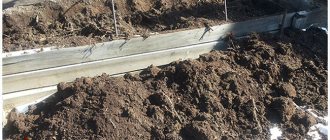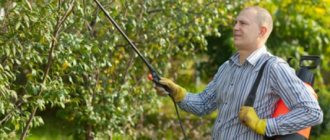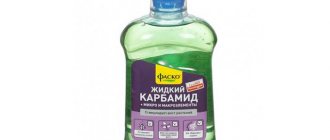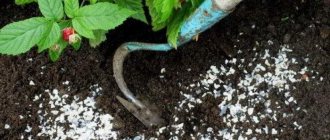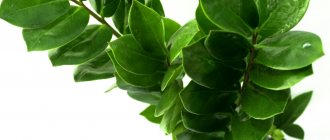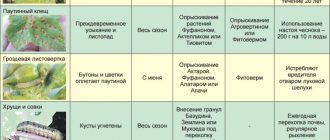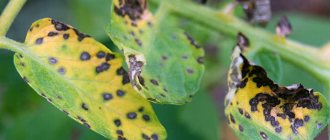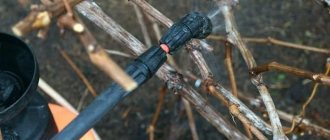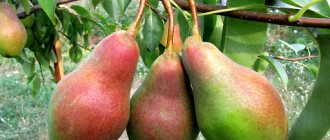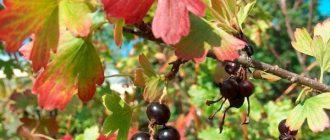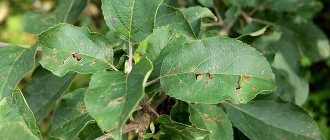Juicy sweet peach fruits are a favorite delicacy of children and adults. They are rich in vitamins A, B, C, as well as phosphorus, calcium, potassium. Thanks to their magnesium content, peaches help get rid of bad mood and anxiety. That's why in Hungary they are called the fruit of calm.
Peach is grown mainly in the south of Russia, in the Krasnodar region and in the Crimea. This is a southern plant, demanding heat and light. Tree care involves timely watering, fertilizing, pruning, and protection from diseases and pests. In the article you will find information about caring for peach in the fall after harvest.
The importance of peach care in autumn
After the end of the fruiting period, the plant prepares for wintering. At this time, it is important to add mineral and organic fertilizers to the soil, which will nourish the peach until spring, protect the tree from diseases and pests, prune and insulate the root system and trunk.
At the end of summer - beginning of autumn, the peach begins to form new flower buds. How successfully they overwinter depends on the soil moisture in the autumn. Therefore, moisture-recharging watering is an obligatory stage of autumn care.
Proper autumn care for fruit trees, and peaches in particular, is the key to obtaining a harvest of large, healthy fruits next season.
How to revive a peach. how to save a peach?
/// how to save a peach?
Report to moderators
after spring planting, the peach was subjected to slight frosts and began to dry out. Young leaves came out from the grafting. What can be done to prevent the peach from dying?
Nick Name
Participant
Nick Name
Report to moderators
Perhaps it's not just the frost. On the territory of Russia, the peach does not survive at all; it is always weakened by an unsuitable climate and is infected with a fungus already at the exit from the nursery. It lives as long as it manages to grow faster than the fungus growing inside it - this is clearly visible from the drying out of the lower branches. So the answer is most likely no. Cut off the dried stuff, feed it with manure, see what happens. Not a single peach from my nursery has lived for more than five years, last year’s seedling did not survive the winter, and now the one grown from the seed is dying in its eighth year. In general, I recommend Kurdyumov’s “Smart Garden” or “Smart Garden in Details” as a desktop (or on-screen) book, as well as the rest of his series about the vegetable garden and vineyard.
homohilaris
Forum member
homohilaris
Report to moderators
Nick Name: June 04, 2021 at 02:22 pm
on (expand)
Perhaps it's not just the frost. On the territory of Russia, the peach is not a resident at all, it is always weakened...
Perhaps it's not just the frost. On the territory of Russia, the peach does not survive at all; it is always weakened by an unsuitable climate and is infected with a fungus already at the exit from the nursery. It lives as long as it manages to grow faster than the fungus growing inside it - this is clearly visible from the drying out of the lower branches. So the answer is most likely no. Cut off the dried stuff, feed it with manure, see what happens. Not a single peach from my nursery has lived for more than five years, last year’s seedling did not survive the winter, and now the one grown from the seed is dying in its eighth year. In general, I recommend Kurdyumov’s “Smart Garden” or “Smart Garden in Details” as a desktop (or on-screen) book, as well as the rest of his series about the vegetable garden and vineyard.
We have the same. Although it is not Russia, but the south of Ukraine, it is clear that peach diseases are an international concept. I don’t even buy seedlings anymore - they’re expensive, survival is questionable, and you might not even get the fruits, or you might just have time to try them. I grow it from seeds.
1
Nata1553
Participant
Nata1553
Report to moderators
Sorry about the peach. Well, what can you do, life is a cruel thing. Southern peach trees will therefore struggle with adversity and difficulties in colder and drier climates. It was hit by frost and it began to dry out. It would be good to carefully remove the dead branches (leaving necrotic tissue in such cases is not beneficial), make a tree of a decent size around the trunk, feed it as it should, loosen it, water it, and organize fumigation if there is a threat of a return late frost. You can try to fight diseases that will appear during the warm season using both commercial chemicals and folk remedies. By the fall, feed it, if it lasts, by winter, cover the trunk circle with improvised material, and you can even wrap the trunk in burlap. In any case, it's worth trying to do your best. All living things tenaciously fight for life. Our three-year-old walnut tree barely survived last winter, but now it’s okay - it’s even managed to grow new branches.
Well, what can you do, life is a cruel thing. Southern peach trees will therefore struggle with adversity and difficulties in colder and drier climates. It was hit by frost and it began to dry out. It would be good to carefully remove the dead branches (leaving necrotic tissue in such cases is not beneficial), make a tree of a decent size around the trunk, feed it as it should, loosen it, water it, and organize fumigation if there is a threat of a return late frost. You can try to fight diseases that will appear during the warm season using both commercial chemicals and folk remedies. By the fall, feed it, if it lasts, by winter, cover the trunk circle with improvised material, and you can even wrap the trunk in burlap. In any case, it's worth trying to do your best. All living things tenaciously fight for life. Our three-year-old walnut tree barely survived last winter, but now it’s okay - it’s even managed to grow new branches.
Autumn care activities
Autumn care activities begin with processing the tree trunk circle.
Digging the soil
This procedure is extremely important for fruit trees, although it requires significant labor and time. Let's list its main advantages:
- By digging up the soil around the trunk, you will destroy the wintering sites of pests. After all, some insects do not overwinter in leaves or fallen fruits, but in the top layer of soil.
- Improve air and water exchange in the soil. The soil will be saturated with oxygen, moisture will freely penetrate into the ground, and its excess will evaporate.
- Destroy weeds that take away nutrition and moisture from the peach.
- If the soil is fertile, then the area around the trunk can be used to grow shade-loving, fast-growing garden crops or flowering plants.
- After the work is completed, the soil surface is mulched. This will prevent the roots from freezing and will provide food for the plant in the spring.
Proper digging will bring undoubted benefits to the tree.
It is important not to make mistakes that will harm the plant:
- Digging too deep, which injures the roots - stick the shovel to a depth of 10-15 cm, no more, otherwise the root system is exposed and damaged.
- In regions with harsh winters, the root system is insulated after digging and watering, otherwise the roots located close to the surface will freeze. This is especially important for young, immature seedlings.
- Digging up light and sandy soils leads to the blowing out of the fertile layer. In this case, it is enough to loosen the top layer, breaking the soil crust.
Watering
In the fall, the peach tree begins to form new flower buds. Their successful wintering depends on soil moisture in the fall.
Pre-winter moisture-charging watering is carried out before insulating the plant for the winter. 9-10 buckets of water are consumed per 1 m² of tree trunk circle.
Fertilizer application
The volume and composition of fertilizers depends on the quality of the soil on the site. If it is poor, then both organic and mineral fertilizers are applied. If not, then organic fertilizers are applied once every 2-3 years.
Compost or humus is used as organic matter. An alternative to such fertilizing is growing green manure in rows. It can be rapeseed, oilseed radish, lupine.
From mineral fertilizers, during digging, add 50 g of calcium chloride and 40 g of superphosphate per 1 m².
Trimming
Using sharp pruning shears or a garden saw, carefully cut off all dried, old or disease-damaged branches from the tree. Also remove those branches that grow inside the crown and thicken it. Only completely healthy branches and stems are left on the plant, which will bear fruit in the next season.
Whitewash
Whitewashing of fruit trees is carried out after the leaves have been shed with the arrival of a steady cold spell. This whitewash is considered the main one.
Preparation
Before whitewashing, the soil around the plants is cleared of debris and covered with film so that diseased bark, mosses, and lichens removed from the tree do not fall on the ground. The trunk is cleaned with wooden or plastic scrapers to remove loose old bark, overgrown mosses and lichens.
Deep cracks and hollows are sealed with garden pitch, RanNet paste or other compounds. After this, all debris accumulated on the film is removed from the site and burned.
Disinfection
The next stage of preparation for whitewashing is spraying the bark with disinfectant compounds. For example, a solution of copper or iron sulfate (300-500 g per 10 liters of water). The trunk and skeletal branches are processed.
Attention. Treatment with iron or copper sulfate is carried out once every 4-5 years, since the drugs accumulate in the soil, poisoning it.
In advanced cases, instead of copper sulfate, Nitrafen is used - a more concentrated, but also more dangerous drug for living organisms.
Among folk remedies for disinfection, solutions of mineral salts in high concentrations are used. For 10 liters of water take one of the following ingredients:
- 1 kg table salt;
- 600 g urea;
- 650 g of nitroammophoska or azofoska;
- 550 g of potassium carbonate;
- 350 g of potassium chloride.
After spraying, whitening begins after 2-3 days, when the disinfectant solution is absorbed into the bark.
Important. Less concentrated disinfectant formulations are prepared for young seedlings. In a separate container, the prepared mixture is diluted with water 2 times.
Whitewashing compositions
Fruit trees are whitened using both self-prepared solutions and purchased products.
The composition is prepared independently from slaked lime (2-2.5 kg per 10 liters of water) and laundry soap (50 g) or casein glue (400 g).
Industrially produced whitewash solutions contain all the necessary ingredients, including disinfectants and adhesives. These are, for example, garden whitewash “Gardener” and paint for trees.
Whitewash rules
When carrying out the procedure, adhere to the following rules:
- The composition is applied to the trunk and skeletal branches in a layer of up to 2 mm. It is recommended to apply two coats one after the other.
- The solution should be homogeneous and thick enough so as not to flow down the trunk.
- Particular attention is paid to the treatment of cracks and scratches on the bark.
- The painting of the trunk is completed a few centimeters below ground level. To do this, the soil below is raked away from the trunk and returned back after whitewashing.
- The entire trunk and 1/3 of the skeletal branches are whitewashed. Particular attention is paid to places cleared of lichen and moss.
Garbage collection
The main goal of autumn harvesting of young growth, fallen leaves and fruits is to deprive insect pests of their wintering places. All collected waste is removed from the site and burned.
Protection from diseases and pests
Pest and disease control begins with prevention. In autumn, all fruit and leaf litter is removed from under the crown. Pruning of diseased and cracked shoots is carried out. The collected garbage is taken outside the garden and burned.
To prevent diseases, peaches are sprayed with 2-3% Bordeaux mixture after the leaves fall. To protect against pests, they are treated with bioinsecticides (Lepidotsid, Fitoverm, Bitoxibacillin) and biofungicides (Mikosan, Fitosporin, Gamair, Alirin).
Advice. Before you start preparing solutions, carefully read the instructions and check the biological products for compatibility.
Laundry soap is added to the prepared mixture for better adhesion. After rains, spraying is repeated. Proper preparation and use of biological products qualitatively protects the crop from pests and diseases.
Autumn pruning of peach and crown formation
Peach is very demanding of sunlight, but at the same time it has high growth vigor. If pruning is not carried out in a timely manner, the tree will grow a large number of stems, on which many fruit buds will form. Due to overload with the harvest, the branches will break, the peach will weaken and will not be able to overwinter normally. Before drawing up a plan for autumn pruning, study the features of crown formation.
Cup type
The crown of most peach varieties is shaped like a bowl - the trees are fairly thinned out, well lit, and easy to care for and harvest. In the spring, the procedure is carried out only in the south, in other regions - in August or in the first half of autumn (subject to warm weather without frequent precipitation). Forming will take at least 4 years; you should start 1–2 years after planting, depending on the height of the seedling:
- The main trunk is pinched at a height of 80 cm, the lower 60 cm are left for the trunk, and the upper 20 cm are left for skeletal branches. The strongest 3 or 4 side branches are left; they can be shortened to 15 cm. The remaining shoots, as well as all buds, are completely removed. In summer, the stems growing upward are broken off.
- The next year, all skeletal branches are brought to the same length. The stems that grow in summer on trunks and skeletal branches are shortened to 10 cm.
- In the third year, only the strongest branches are left, located at a distance of half a meter from the base of the skeletal branches, shortened to 50 cm. These will be the secondary branches.
In the last year they have been laying down branches of the 3rd order. In summer, shoots that grow downwards, inwards and horizontally are removed. In the future, it is necessary to carry out annual thinning and preventive pruning. The peach bears fruit well for about 13 years, then it needs to be rejuvenated. The procedure is permissible when the amount of harvest noticeably declines, while the peach itself remains healthy and well-groomed.
Economic pruning
This method is more suitable for varieties with dense bud distribution. The procedure consists of shortening weakened annual growths by 15–20 cm, while normal branches need to be pruned so that 3 to 8 groups of fruit buds remain (depending on the vigor of growth). The described type of pruning can be combined with replacement pruning - strong fruit shoots are shortened using an economic method, and weak, long-growing and mixed shoots are shortened only by 3 buds.
By combining 2 types of pruning, you can form the optimal crown for peach varieties that are prone to heavy thickening. Never use critical pruning patterns on young trees. If you remove a significant part of the branches, you will have to wait more than 4 years for the beginning of fruiting. Before the first flowering, it is advisable to thin out the crown no more than once a year.
Autumn pruning of formed peach
The procedure is carried out from late September to mid-October so that the wounds have time to heal before the onset of frost. You can only use sharp, clean and disinfected garden tools (scissors, loppers, secateurs or saw). The cut areas must be covered with garden varnish or oil paint; in extreme cases, treated with crushed wood ash.
Attention!
The main volume of peach harvest is formed on mature, annual and bouquet branches. On fruiting and generative shoots, the fruits are usually small and dry.
In the fall, sick, damaged and dried branches are removed (pests, fungal spores and pathogenic bacteria can overwinter in them). Weakened shoots and tops that thicken the crown must be pruned; in winter they will take away too many useful substances. First, branches containing only flower or sprout buds are cut, then the crown is thinned out. Any pruning is carried out only in warm and dry weather.
The optimal height of an adult peach is 3.5 meters; the crown should be lowered by moving it to the sides. In regions with harsh winters, heavy pruning is carried out in the fall for better distribution of nutrition. In the conditions of the middle zone or in the south, as well as in the case of winter-hardy varieties that can withstand temperatures down to 40 degrees, this type of haircut is not necessary.
Preparing for winter
Peach is a southern and heat-loving crop, not adapted to wintering in harsh conditions. Therefore, when grown in central Russia, the Urals and Siberia, the plant is wrapped for the winter. It is especially important to take care of young trees.
Insulate the seedling as follows:
- In the immediate vicinity of the trunk, two posts are driven in to the height of the trunk (before branching begins).
- Then the posts and standard are wrapped with covering material. You can use burlap or other dense fabric for this purpose.
Another method of insulation is the construction of a cardboard or wooden box. It is installed around the trunk.
If winters in your region are mild (temperatures do not drop below -10°C), then you can get by by hilling the plant trunk to a height of 0.5 m.
It is also good to cover the tree trunk circle with a thick layer of mulch (for example, peat, sawdust or straw). The layer thickness should be at least 10 cm. In addition to preserving heat, mulch prevents the evaporation of moisture from the soil surface.
How to process correctly
To get the maximum result from the spraying, it should be carried out by adhering to certain rules, namely:
- With the onset of autumn, before you begin processing, you should thoroughly clear the front garden of dry leaves.
- Then perform pruning, provided that such manipulation is necessary. Do not forget that this procedure in the fall is performed in extreme cases.
- If pruning was performed, then all cut areas will need to be thoroughly covered with garden varnish.
- Next, they whitewash the trunk, and then begin spraying.
First of all, processing should be carried out on a calm and windless day. Also, make sure that meteorologists are not predicting rainy weather in the next two days. Well, after all the preparatory measures have been completed, they begin spraying, which is preferably carried out in the afternoon.
To carry out the treatment, you will need a spray bottle, from which you first spray the trunk, then the branches, and then the foliage on both sides.
It is worth highlighting one important point: quite often gardeners make a mixture of fungicides and insecticides. This unique solution allows you to simultaneously destroy both parasites and diseases.
Please note that using the same products regularly is not recommended. The fact is that parasites quickly adapt to almost any remedy. Therefore, if the drug worked well the first time, the same result will not be achieved the second time.
In this case, there is only one piece of advice: change the chemicals regularly; fortunately, it is not difficult to find and buy the necessary product on a specific market.
The ability to properly organize care and carry out processing in a timely manner will save your peach crop from possible death and attacks from various parasites. At the same time, you need to know how the processing is carried out correctly and at what time of year it is carried out; this will help not only to reap a good harvest, but also to minimize the financial costs of chemicals.
Features of care
Let us highlight the main features of caring for seedlings, as well as the nuances of care depending on the region and crop variety.
Saplings
Caring for mature and young trees is somewhat different. When processing seedlings in the fall, the following features are taken into account:
- When carrying out autumn pruning of young trees, it is important to plan in advance how the crown will develop. When formative pruning, 3-4 skeletal branches are left, forming them in the shape of a bowl.
- When spraying against pests and diseases, disinfection and whitewashing, weakly concentrated solutions are used so as not to cause burns.
- When caring for peach seedlings, special attention is paid to insulating them for the winter. An undeveloped root system located close to the surface of the earth is defenseless against frost.
Also, caring for young peach includes feeding to activate growth and development.
Depending on the region and variety
Caring for peach trees when grown in the southern regions is limited to timely feeding and watering. In central Russia, the Urals and Siberia, it is necessary to take care of covering the plant for the winter. All peach trees, regardless of their variety, are sheltered here. Even if it is indicated that the variety is winter-hardy, the plants are still covered for the winter.
In the middle zone, seedlings are planted both in autumn and spring. When early cold weather sets in with prolonged rains, it is better to dig them in and plant them in the spring, as soon as the spring frosts have passed. The soil in the upper layer should warm up to +12…+15°C.
To the north, frost-resistant varieties of peaches take root well when planted in spring. Having grown stronger during the spring-summer period, peaches better tolerate winter cold.
In the south, it is preferable to plant seedlings in the fall (September-October). Before the cold weather arrives, young plants will have time to take root and adapt to the new place.
Autumn spraying of seedlings with Zineb or 1% Bordeaux mixture will prevent the appearance of leaf curl and other diseases.
When is the best time to spray?
As described above, without proper care, a peach will not produce a good harvest. Therefore, if you decide to plant this southern crop in your front garden, keep in mind that in addition to performing such manipulations as:
- application of fertilizers;
- hydration;
- pruning
It is also very important to spray in a timely manner.
As a rule, the main processing is carried out in the fall. It is aimed at destroying colonies of parasites that settle in peach for the winter and can cause irreparable harm to the crop over the entire cold period.
It is worth highlighting that spring and summer processing is also very important. During the entire growing season, it is necessary to process the tree several times. Since each spraying is aimed at destroying a specific defect or parasite. So, let's take a closer look at all the treatment periods and what benefits they provide to the tree.
Spring treatment
With the onset of spring, gardeners have a lot of gardening to do. Spring is considered the hottest time, because it is necessary to have time to carry out pruning and processing on time. By the way, spraying at this time of year is performed several times, namely:
- first treatment before bud break;
- the second during the formation of buds;
- and the third immediately after flowering.
It is worth highlighting that each processing has its own tasks. For example, the first spraying is carried out to destroy parasites that survived after autumn treatment. To do this, you can use iron sulfate or a solution of Bordeaux mixture. Solarium emulsion also copes well with the task.
But keep in mind that urea-based solutions are not used in the first treatment. Because this product contains nitrogen, which stimulates the growth of green mass. And if such preparations are used during the first spraying, the crop will come out of dormancy ahead of schedule. Which will negatively affect the harvest.
The second spraying is carried out to combat dangerous diseases of fungal origin, such as:
- powdery mildew;
- monoliosis;
- scab.
In this case, a solution of Bordeaux mixture also worked well. It must be remembered that processing is carried out strictly according to the instructions. And the final treatment is performed after flowering in order to destroy the remaining parasites. In this case, it is good to use products with urea.
Summer treatment
With the onset of summer, treatment is carried out using insecticides or fungicides. It is worth noting that spraying of any product should be carried out at least 20 days before harvest.
As a rule, in the summer, one peach treatment is carried out, and it is purely preventive in nature.
Autumn processing
Autumn processing is the most important and very necessary. It is performed to prevent the development of fungal bacteria. The fact is that the autumn period is characterized by high humidity levels. And as you know, humidity is the ideal environment for the rapid development of new spores that are dangerous for the peach tree.
Please note that if autumn treatment is not carried out, in the spring millions of new defects will appear on the peach crop, which can ruin the plant.
As a rule, the time for spraying directly depends on the growing region. But at the same time, it is necessary to focus on weather conditions. In other words, spraying against parasites should be carried out at least 4 weeks before the onset of the first frost. And also keep in mind that by the time you planned to spray, all the foliage should have fallen off.
Advice from experienced gardeners
Recommendations and advice from experienced gardeners will help beginners grow peach trees on their plot:
- Peach is planted in autumn or spring. Plants must have time to take root before the onset of cold weather, so they are planted at the end of September. When planting in spring, it is important to have time before the seedlings awaken and buds open.
- Seedlings are selected up to 1.5 m high, with a developed root system and bark without damage.
- Particular attention is paid to the choice of landing site. It should be sunny and protected from the north wind. A good location would be near a wall facing south.
- When pruning in autumn and spring, use pruning shears with sharp blades. Then the cuts will be even and heal quickly.
- The crown of the tree should not be thickened. Peaches need plenty of sunlight and air to grow and develop.
- Treatment of trees with drugs against pests and diseases is carried out before the buds open in the spring and after the leaves fall in the fall.
- Peach requires watering in late spring and early summer. Moisture is necessary for fruit set and growth. In the second half of summer, watering is reduced. Before wintering, carry out abundant moisture-recharging watering, which is necessary for successful wintering.
This is interesting:
Step-by-step instructions on how to properly cover figs for the winter.
How and with what to properly fertilize grapes in the fall.
How and when to collect currant and raspberry leaves for drying for the winter.
A guide on how to plant cherries correctly in the fall and avoid mistakes.
Protection and handling precautions
Since autumn is the time when the entire harvest is harvested, processing is carried out using pesticides, which are most effective in controlling pests and diseases. It should be understood that you need to be extremely careful when interacting with such drugs, because their direct contact with the human body can cause serious harm to health.
For this reason, it is recommended to follow basic precautions:
Recommended reading
How to get rid of peach leaf curl?
- Before spraying, protect your eyes with goggles, your hands with gloves, and put on special clothing;
- if the drug gets into your eyes or mouth, you must immediately wash the affected area of the body with soap and water;
- storing chemicals near food is unacceptable;
- After the treatment, all equipment, as well as workwear, are washed in a soapy solution and doused with boiling water.
When growing peaches in your garden, you should always remember about proper and timely care, one of the main stages of which is regular pest control and numerous diseases. This approach will ensure the health of fruit trees, as well as an annual stable harvest of high quality.
Two ways to plant a peach
There are several ways to plant a peach tree. There are no special rules and you can choose any method that suits you best.
Plant on a cone
This is the easiest and most common way to plant fruit trees. It is enough to follow the following sequence of actions:
- Pour 2 buckets of plain water into the prepared pit;
- when the liquid is absorbed into the ground, add fertilizer to the bottom;
- Place a seedling on the top of the formed mound, straighten the roots along the slope so that they are at an angle of approximately 45 degrees;
- fill the hole with earth and compact it a little;
- make sure that there are no air cavities near the roots;
- water the tree with 1 bucket of plain water;
- when water is absorbed into the ground, mulch the area near the trunk with peat, humus, and crushed bark;
- fix the seedling near the support so that it does not tilt during soil settlement after planting.
Watch the following video about planting a peach using the “cone” method:
Plant "in the slurry"
Using this method allows you to plant a peach yourself, without additional help. Need to do:
- Add humus (2-2.5 buckets) to the bottom of the planting hole and pour plain water (1-1.5 buckets);
- after half the water has flowed into the ground, add fruit soil (1 bucket);
- a slurry should form into which the tree root is placed;
- the viscous substance independently holds the peach in the desired position;
- Gradually fill the hole with soil and periodically pull the seedling up, which will align the roots in the correct position;
- after filling the hole, water the tree again;
- mulch the tree trunk circle - the thickness of the mulch layer is at least 6 cm.
In the video below, the gardener provides an overview of planting peach in the fall using the “in the slurry” method:
Possible mistakes when planting peach
During the peach tree planting procedure, the following mistakes are most often made:
- Too much mineral fertilizer was added to the planting hole. This leads to the death of beneficial bacteria that process fertilizers into a form that can be absorbed by the plant.
- If the hole for planting has not been prepared in advance, this leads to the root collar becoming too deep. After planting, the soil will settle too much. As a result, the proper development of the tree slows down.
- It is important to choose the right peach variety that is suitable for growing in a certain climatic zone. In the future, such a discrepancy may cause the death of the plant.
- Incorrect timing for planting a seedling leads to its death.
- Planting a seedling that is more than 2 years old. As a result, the peach in a new place will take a long time to take root, which negatively affects the development process.
Peach trunk diseases. Common Peach Diseases
The greatest danger to peach in garden conditions are infections of a bacterial, viral and fungal nature. They can lead to complete loss of the crop and death of the plant within 1-2 years. Pathogens can spread to other crops, so it is important not only to choose the right treatment, but also to follow preventive measures.
Curly
A fungal infection that occurs in almost any climate. Provoking factors are high humidity and sudden changes in weather. Infection usually occurs in the first half of summer or in the early stages of the growing season. The main signs of curliness:
- the appearance of a gray coating on the back of the leaves;
- twisting and deformation of young shoots;
- the leaves acquire a characteristic curved shape and are covered with reddish swollen spots;
- The pericarp is deformed, the yield decreases.
Peach tree death usually occurs in winter or in the second year after infection. If symptoms of curling are detected, all affected parts of the plant should be removed and then treated. Copper-containing fungicides (Bordeaux mixture, copper sulfate solution, Khom, Skor) are used as preparations.
Moniliosis of stone fruits
Dangerous peach disease of fungal nature. The first signs appear in the spring at the beginning of flowering. Leads to the appearance of a brown tint of inflorescences and their shedding. Already formed fruits quickly darken, become deformed and rot. In warm and humid weather, large branches, as well as two-year-old shoots, dry out. Characteristic circles appear on the wood, and metabolic processes in the tree are disrupted.
Moniliosis is difficult to treat. All affected parts of the tree should be trimmed and burned. After this, treat the soil, trunk and crown with a complex chemical preparation (Chorus, Topaz or Topsin). Spraying is carried out in two stages with an interval of 10-14 days. The fruits are not recommended for storage and consumption.
Clusterosporiasis
One of the most common fungal infections of peach. It affects buds and young shoots, as well as leaves. The disease is provoked by an unbalanced soil composition, as well as non-compliance with tree care rules. Symptoms of kleasterosporiosis:
- the appearance of brown spots on leaf blades;
- plaque increases, swells and leads to the formation of holes;
- bright red spots form on the shoots, from which gum flows;
- Productivity is actively decreasing, fruits are formed of irregular shape and rot.
All vegetative parts of the tree should be pruned to avoid the spread of the pathogen in the garden. Treat the affected areas and traces of pruning with garden varnish. Spray the soil, trunk and all branches with a 1% solution of Bordeaux mixture or copper sulfate. The harvest after kleasterosporiosis is not used for food.
Scab
It develops only at high air temperatures and high humidity. Most often, scab is observed in the southern regions, when there is an apple or pear tree nearby. The disease can be identified by the appearance of light green spots on the leaves and their falling off. The fruits become deformed and crack, and depressed black spots can be seen on the skin. The shoots become covered with a dark coating and numerous cracks develop.
Scab is practically untreatable. If signs of infection are detected, all parts should be cut off, and damage to the trunk should be treated with garden varnish. Fungicides Topsin, Delan and copper oxychloride are used as preparations, according to the dosage of the manufacturers.
Powdery mildew
The disease is fungal in nature, spreads quickly and is quickly treated in the early stages. The main symptom is the appearance of a light gray powdery coating on fruits, foliage and shoots. All vegetative parts are deformed and lag behind in development. The mycelium destroys the structure of the fruit, causing the peaches to rot.
All parts of the tree infected with powdery mildew must be removed. Carry out mass treatment of plants and the tree trunk area with any copper-containing fungicide. The drugs Topaz and Topsin-M demonstrate effectiveness.
Hearth rot
This fungal disease is dangerous because it can develop on the tree and after harvesting. Typical signs of fruit rot:
- productivity indicators are significantly reduced;
- gray-green swollen formations appear on the surface of the fruit, gradually increasing in size;
- new growth buds do not form, the shoots are deformed;
- the peaches become deformed, gradually rot and fall off.
The causative agent of the disease can remain in the soil for a long time, remaining active. If symptoms are detected, complete sanitary pruning must be carried out. Spray all parts of the tree with Teldor or Topsin-M. Fruits infected with rot should not be eaten.
